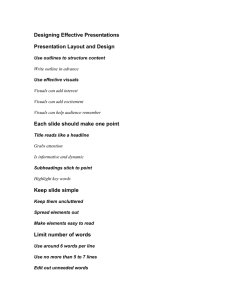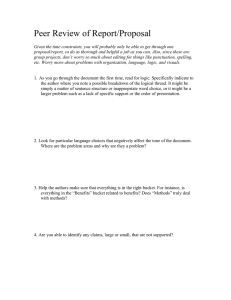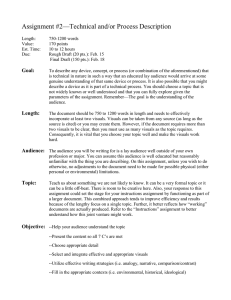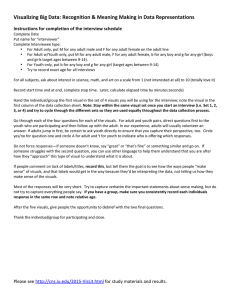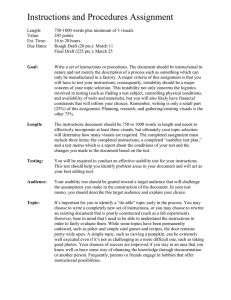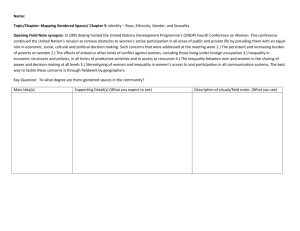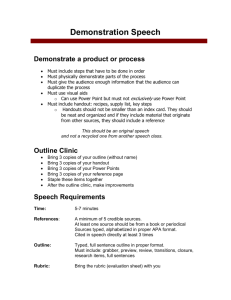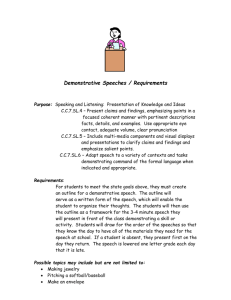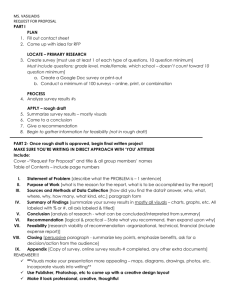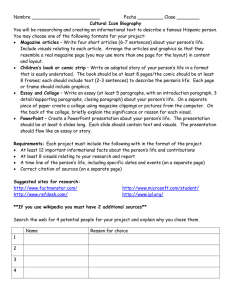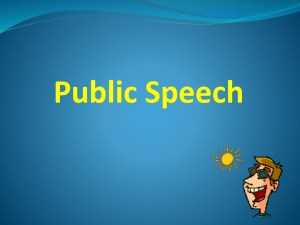supplementary materials - Dana Hurtova
advertisement
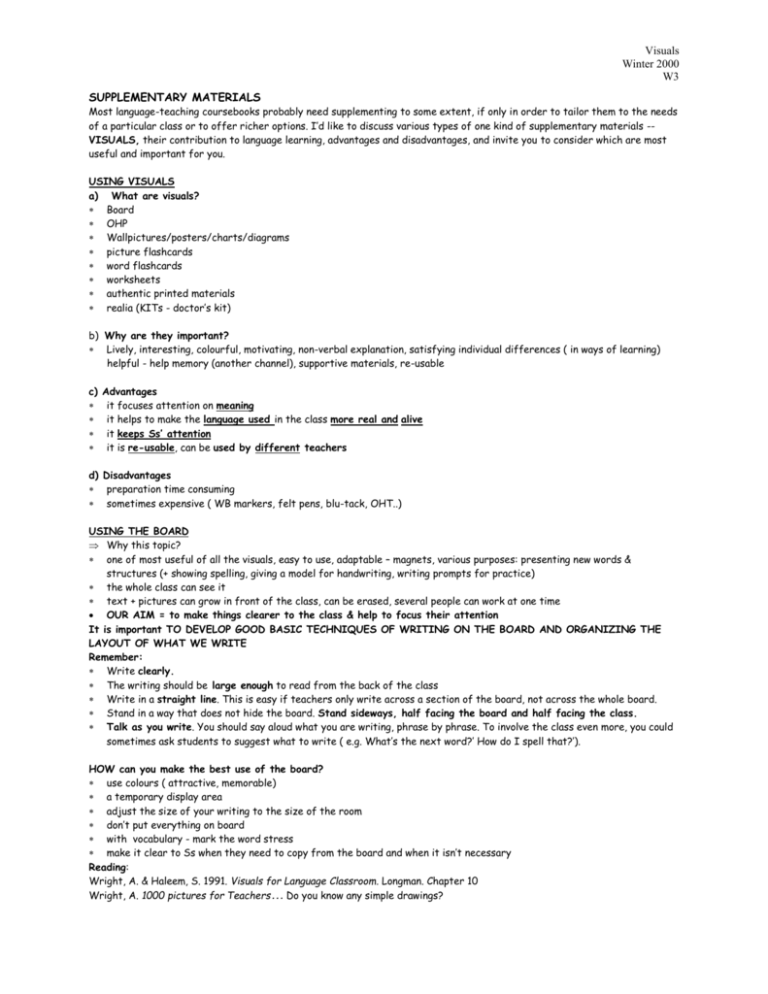
Visuals Winter 2000 W3 SUPPLEMENTARY MATERIALS Most language-teaching coursebooks probably need supplementing to some extent, if only in order to tailor them to the needs of a particular class or to offer richer options. I’d like to discuss various types of one kind of supplementary materials -VISUALS, their contribution to language learning, advantages and disadvantages, and invite you to consider which are most useful and important for you. USING VISUALS a) What are visuals? Board OHP Wallpictures/posters/charts/diagrams picture flashcards word flashcards worksheets authentic printed materials realia (KITs - doctor’s kit) b) Why are they important? Lively, interesting, colourful, motivating, non-verbal explanation, satisfying individual differences ( in ways of learning) helpful - help memory (another channel), supportive materials, re-usable c) Advantages it focuses attention on meaning it helps to make the language used in the class more real and alive it keeps Ss’ attention it is re-usable, can be used by different teachers d) Disadvantages preparation time consuming sometimes expensive ( WB markers, felt pens, blu-tack, OHT..) USING THE BOARD Why this topic? one of most useful of all the visuals, easy to use, adaptable – magnets, various purposes: presenting new words & structures (+ showing spelling, giving a model for handwriting, writing prompts for practice) the whole class can see it text + pictures can grow in front of the class, can be erased, several people can work at one time OUR AIM = to make things clearer to the class & help to focus their attention It is important TO DEVELOP GOOD BASIC TECHNIQUES OF WRITING ON THE BOARD AND ORGANIZING THE LAYOUT OF WHAT WE WRITE Remember: Write clearly. The writing should be large enough to read from the back of the class Write in a straight line. This is easy if teachers only write across a section of the board, not across the whole board. Stand in a way that does not hide the board. Stand sideways, half facing the board and half facing the class. Talk as you write. You should say aloud what you are writing, phrase by phrase. To involve the class even more, you could sometimes ask students to suggest what to write ( e.g. What’s the next word?’ How do I spell that?’). HOW can you make the best use of the board? use colours ( attractive, memorable) a temporary display area adjust the size of your writing to the size of the room don’t put everything on board with vocabulary - mark the word stress make it clear to Ss when they need to copy from the board and when it isn’t necessary Reading: Wright, A. & Haleem, S. 1991. Visuals for Language Classroom. Longman. Chapter 10 Wright, A. 1000 pictures for Teachers… Do you know any simple drawings? Visuals Winter 2000 W3
